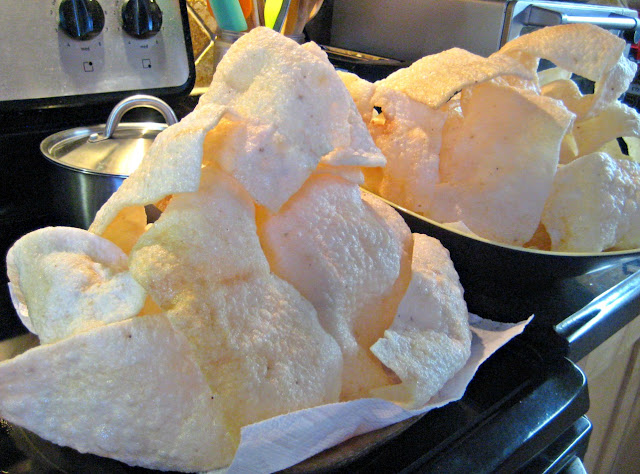Impress and save $ by making your own cold seafood appetizer platter! Popular but pricey frozen shrimp rings don't cut it-- defrosted overnight the shrimps are waterlogged and their natural flavours diluted. When the occasion arise, I cook up frozen shrimps and make my own cocktail sauce, but this year for our family Christmas gathering I wanted to take it up a notch and create a variety trio platter-- tagging on mussels and imitation crab meat. It's so simple to do-- just boil/steam the seafood that requires cooking, shell the shrimps, refrigerate to cool and arrange it all on a nice serving dish. Never buy cocktail sauce, I repeat, just don't do it! You likely have the four ingredients to combine to make a wicked one, namely ketchup, horseradish, Worcestershire sauce and lemon with hot sauce as optional. Why add another condiment in the fridge? And the bill on this gourmet delight of a seafood platter? A mere $25... An extravagant offering without the extravagant cost.
DIY Seafood Cocktail Platter
Serves 12 and more as an appetizer
2 lbs. frozen *zipperback shell-on shrimps (medium to large size).
2 lbs. frozen half shell mussels (I used New Zealand Greenshell mussels)
1 pkg. (227 g) stick imitation crab meat (cut into bite-size pieces) or flake-style
Cocktail Sauce:
1 cup ketchup
2 to 4 Tbsp. grated/prepared horseradish (add a Tbsp. at a time for desired flavour and texture)
2 tsp. Worcestershire sauce
a splash or two of lemon juice
hot sauce (optional)
lemon wedges
fresh parsley sprigs and hydrated dried seaweed for garnishing
fresh parsley sprigs and hydrated dried seaweed for garnishing
Bring a large pot of water with a tsp. salt to a boil. Bring the shrimps to a boil, and cook for two minutes until the shell is bright orange, and flesh is opaque and firm. Ladle them out into a large bowl filled with cold, cold water to stop the cooking process. Strain well. Peel the shrimps (* with slit shells you can easily “zip” off these shrimps), but keep the shell ends intact for easy holding and dipping. Lay the shrimps on a paper-towel lined bowl and refrigerate until cool.
Meanwhile, bring the water back to a boil and add the mussels. Bring to a boil and cook for two to three minutes until mussels are firm. Ladle out into another bowl with cold water. Drain the water well, and place the mussels into a bowl and refrigerate until cool.
Combine ketchup, horseradish, Worcestershire sauce and lemon juice, and mix well. Add hot sauce if desired. Refrigerate until ready to use.
 |
| I used homemade ketchup from RFRK with chunky bits of tomatoes and onions. |
Arrange the shrimps, mussels, and imitation crab meat pieces onto a platter along with a ramekin/small bowl of cocktail sauce and lemon wedges. For the bells and whistles on presentation, add green garnishes such as parsley sprigs and seaweed tucked in and around different points of the platter. I made mine super simple-- still gorgeous no?
 |
| This is just a beauty shot portion of what I was serving at the dinner party! |
Talk about impressive to bring to any gathering! Succulent, juicy and pretty sophistication!
Sidebar: Most Torontonians are familiar with the lobster mountain by now, but have you ever heard of the shrimp chip mountains? Very famous in my household :). Home deep-fried, large hand-size real shrimp chips from Vietnam, bespeckled with cracked black pepper... I often don't leave home to a party without them :).
Seafood medley served straight out of the toted plastic tupperware no frills-style at my parents' place! Thank goodness for thinking ahead with my white platter home beauty shots!
The Festive East meets West spread as usual with my extended family!
What did you EAT to celebrate Christmas Day?

























































